A quick note: The stories here are pulled from memories of workshops that somehow produced incredible work despite the hazards. I don’t have photos from those days, so I’ve done my best to recreate the scenes with illustrations. And let’s be clear: while these stories are told with affection and humor, safety should always be taken seriously in the shop. We can appreciate the old-school grit without repeating the risks.
Grandpa didn’t need safety meetings or warning labels. He had common sense, steady hands, and an unshakable belief that “it’ll be fine.”
His shop had more hazards than a demolition derby, and somehow he still had all ten fingers.
No blade guards. No dust masks. No concern whatsoever.
Just the high-pitched whine of a table saw, the smell of burning wood, and the occasional “watch this” that made your stomach drop.
Safety glasses? Those were for people who blinked too much.
OSHA would’ve shut him down in five minutes. But Grandpa? He built furniture that’s still standing fifty years later.
1. A Table Saw With No Blade Guard (Because “It Gets in the Way”)
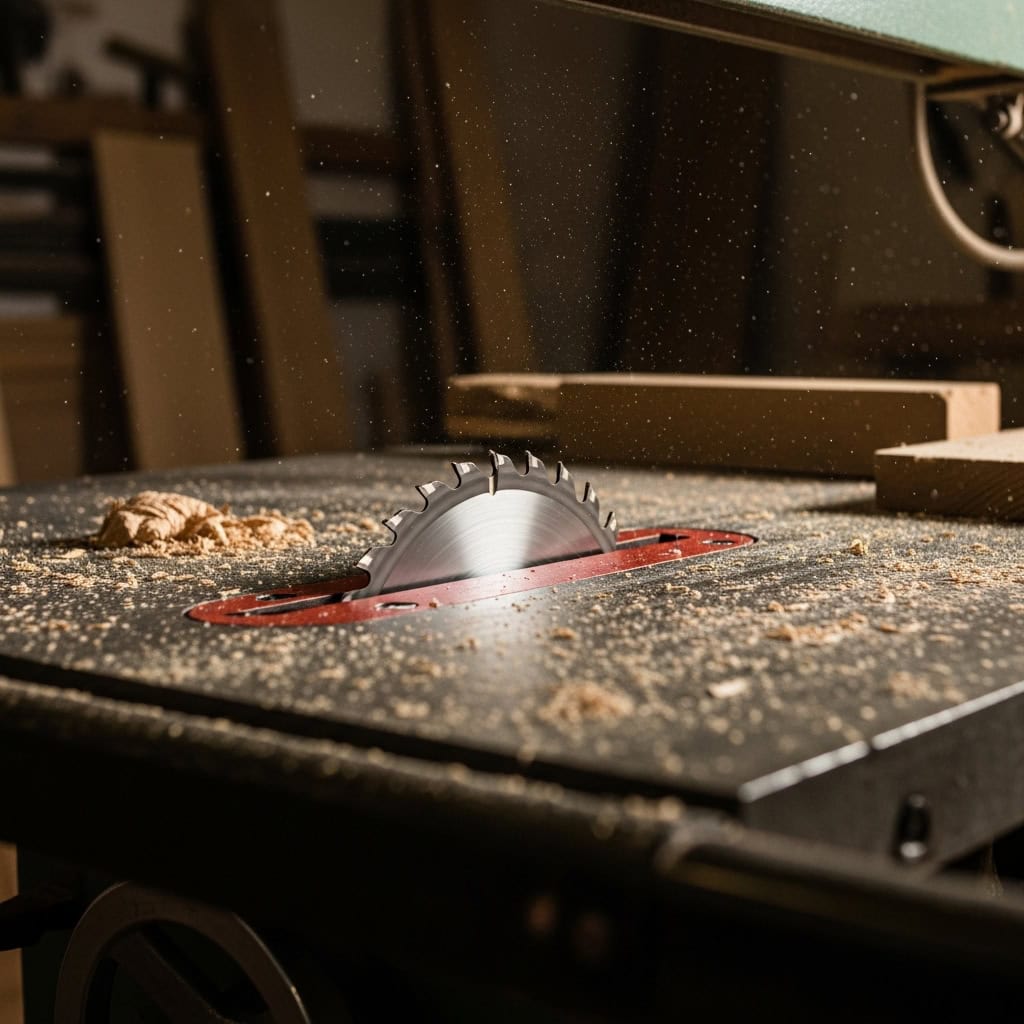
The blade guard came off sometime in 1978 and never went back on.
“Can’t see the cut line with that thing,” he’d say, leaning over a spinning blade like it was a Sunday crossword puzzle.
No riving knife. No splitter. Just raw, exposed carbide teeth spinning at 4,000 RPM and his thumb about three inches away.
Push stick? Sometimes. Other times? Just his bare hands guiding wood through like he was petting a cat.
You’d watch him rip a board and hold your breath the entire time. He never flinched.
The blade was probably duller than it should’ve been, which somehow made it more dangerous—more likely to kick back, grab the wood, or bind up mid-cut.
Ask him about adding the guard back on and he’d look at you like you just suggested training wheels on a motorcycle.
“I know where the blade is.”
2. A Radial Arm Saw That Could Pull Your Hand Into Next Week
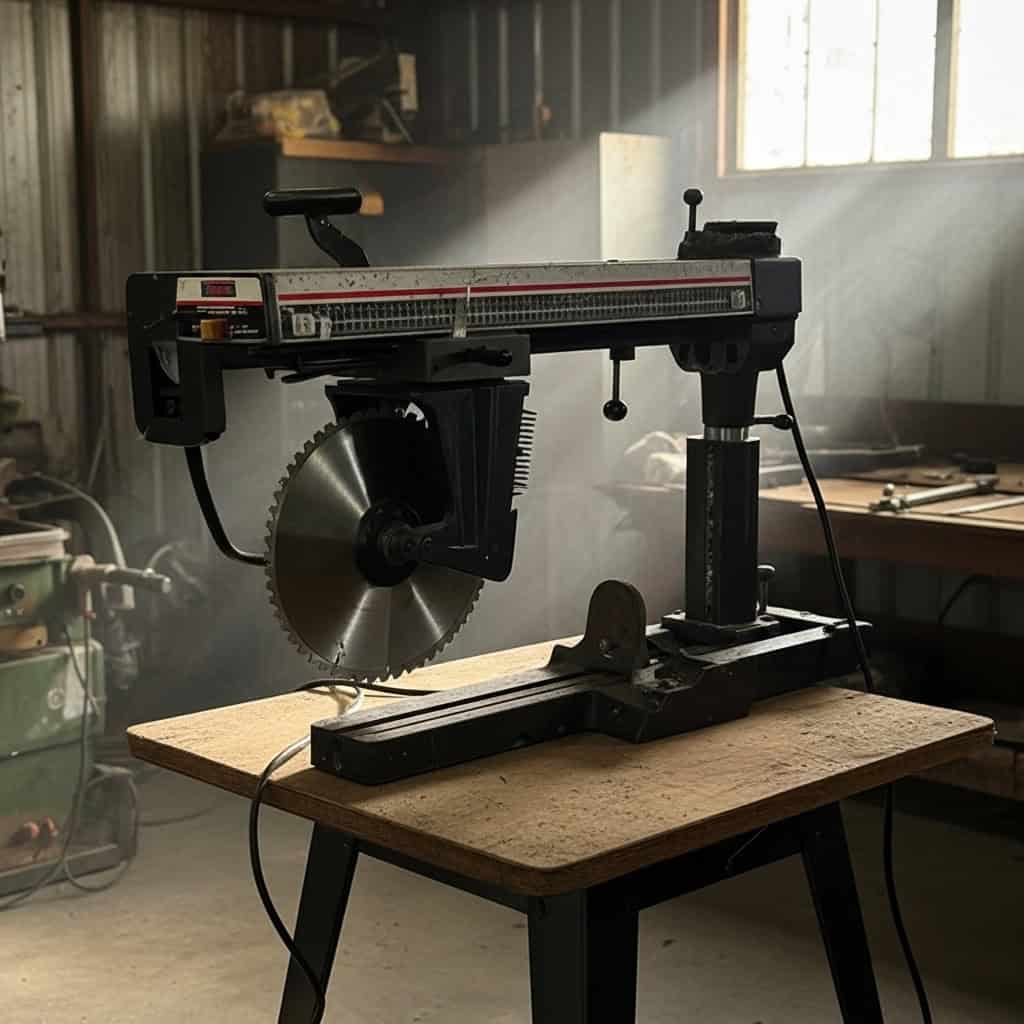
If there was ever a tool designed to teach respect through fear, this was it.
The radial arm saw sat in the corner like a sleeping dragon—heavy, awkward, and capable of yanking itself toward you if you weren’t paying attention.
Grandpa used it for crosscuts, miters, dados, and probably things it was never meant to do. The blade spun toward you instead of away, which felt wrong on a primal level.
One slip and that thing would climb right up the board and into your chest.
The dust port? Clogged since the Reagan administration. The safety guard? Barely covered half the blade.
He’d pull that saw through a 2×4 with one hand, holding the board with the other, and somehow never got hurt.
You tried it once. Never again.
3. A Jointer With a Guard That Hadn’t Moved Since 1985
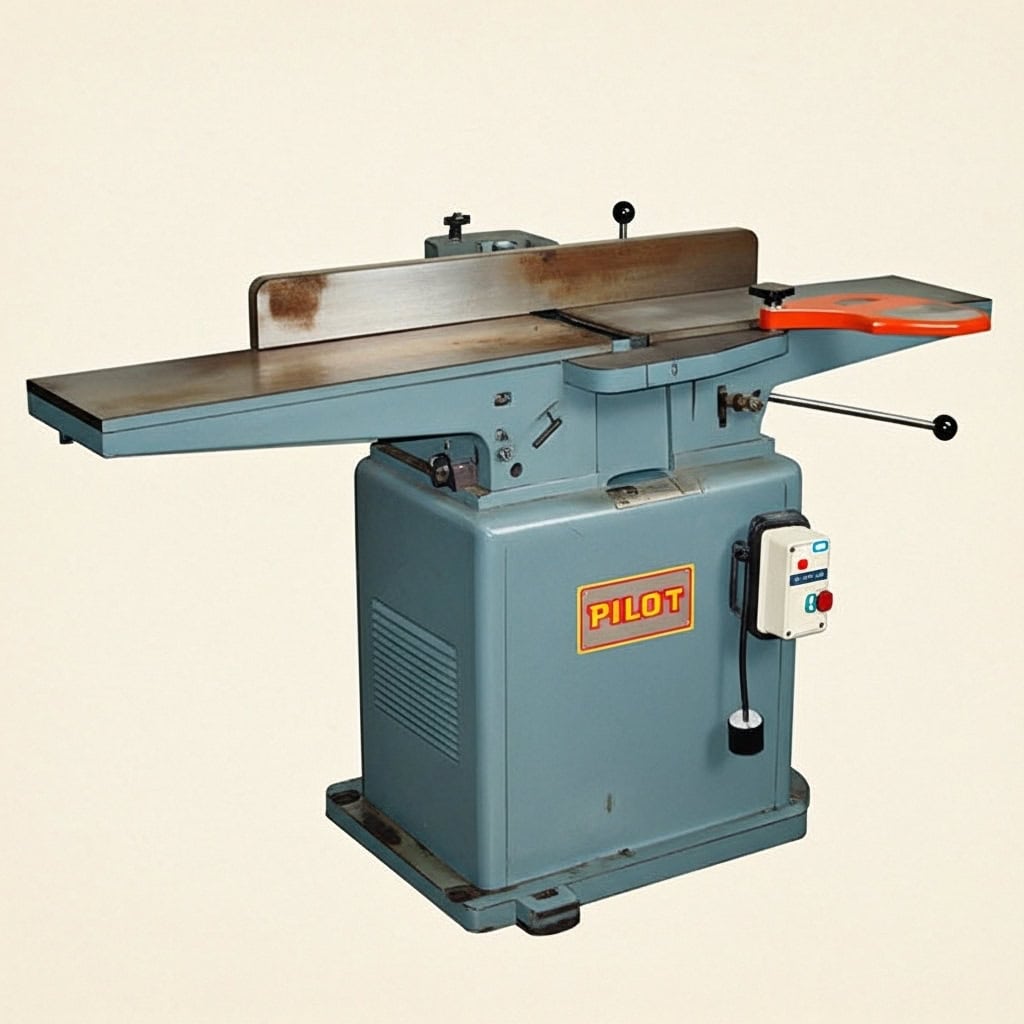
The jointer guard was technically there. It just hadn’t been adjusted in decades.
It was stuck halfway open, rusted in place, covering about 40% of the cutterhead. The other 60%? Fully exposed and spinning fast enough to ruin your whole year.
Grandpa would run boards across it with his hands inches from the blades, fingers spread wide for control, no push blocks in sight.
“You just gotta keep pressure here,” he’d say, tapping the wood right next to the danger zone.
The outfeed table was a little low. The fence was slightly out of square. Didn’t matter—he knew how to compensate.
The sound it made was somewhere between a hum and a scream. You learned real quick to keep your hands flat and your focus sharp.
That jointer didn’t forgive mistakes. And Grandpa didn’t make many.
4. A Bandsaw With the Upper Guide Set About Eight Inches Too High
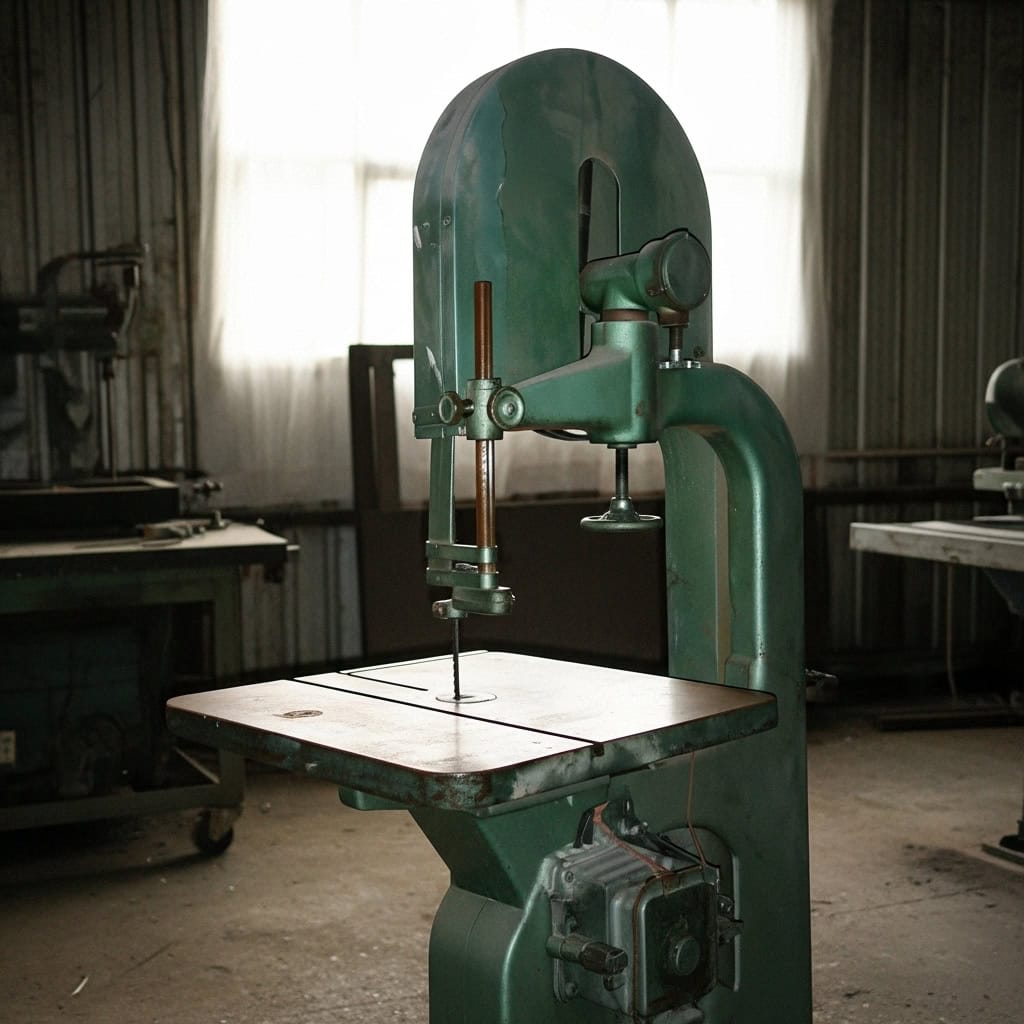
The bandsaw blade was exposed from the table all the way up to the ceiling, flapping like a loose guitar string.
You’re supposed to set the upper guide just above your workpiece. Grandpa set it once—in 1973—and left it there.
“Why move it? It’s fine.”
So there’d be seven inches of exposed, spinning blade wobbling through the air while he resawed a board.
The tires were cracked. The tension was a guess. The tracking was “close enough.”
But he could resaw a plank into perfect veneers without a fence, just eyeballing the cut and following a pencil line.
You’d stand there, watching that blade whip around, wondering how it didn’t snap and take someone’s eye out.
It never did. But it felt like it could—any second.
5. A Bench Grinder With One Wheel, No Shields, and a Death Wish
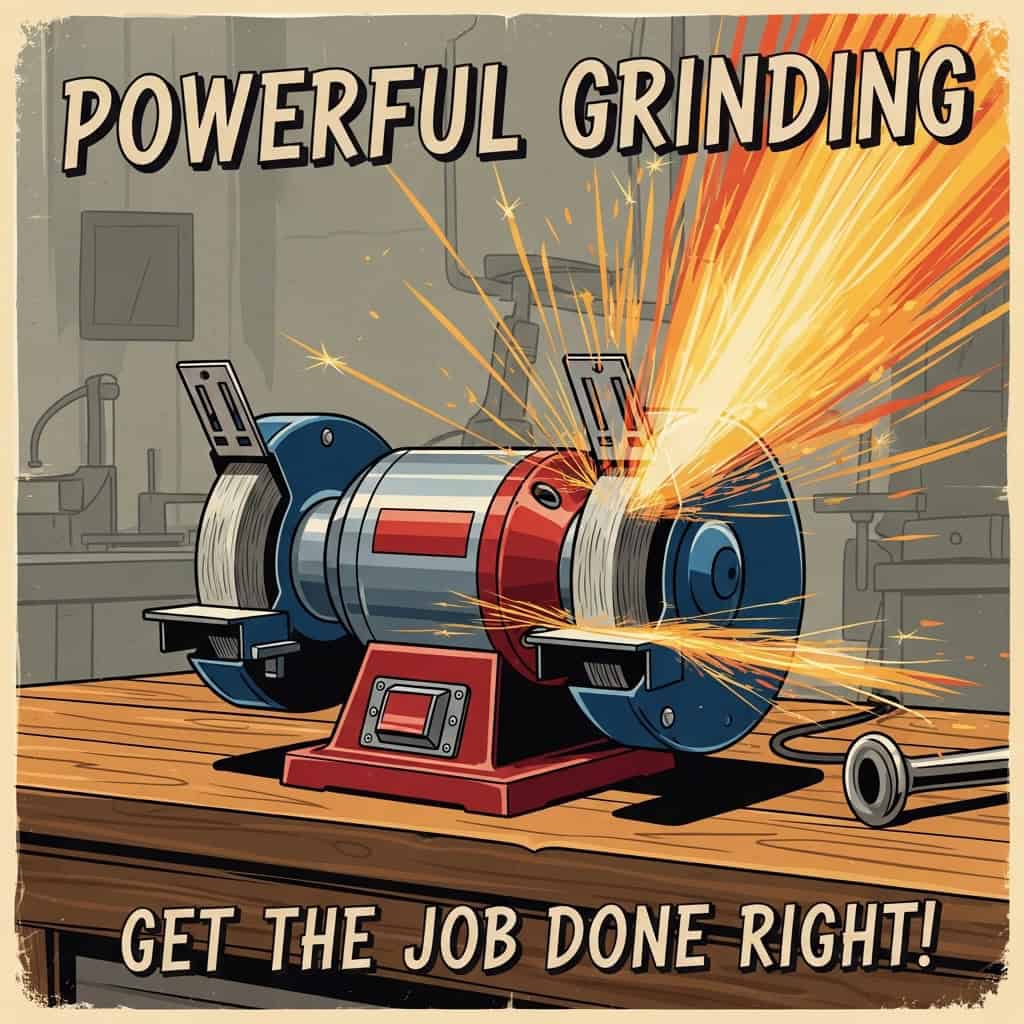
Both eye shields were long gone. One grinding wheel was missing entirely—just an empty spindle on that side.
The remaining wheel was loaded up with metal bits, uneven as a gravel road, and probably hadn’t been dressed since the Carter administration.
No tool rest. Or if there was one, it was adjusted so far from the wheel you couldn’t use it anyway.
Grandpa would hold a chisel against that wheel freehand, sparks flying into his chest, squinting through the fire like a blacksmith.
“Don’t need goggles. Just don’t get too close.”
Too close to what? The exploding wheel? The sparks? The spinning nightmare machine?
He’d sharpen lawnmower blades, axes, chiesels, and probably a butter knife or two. Never wore a mask. Never wore gloves.
And somehow, that grinder’s still running.
6. A Circular Saw With a Jammed Blade Guard That Hadn’t Retracted Since Bush Sr.
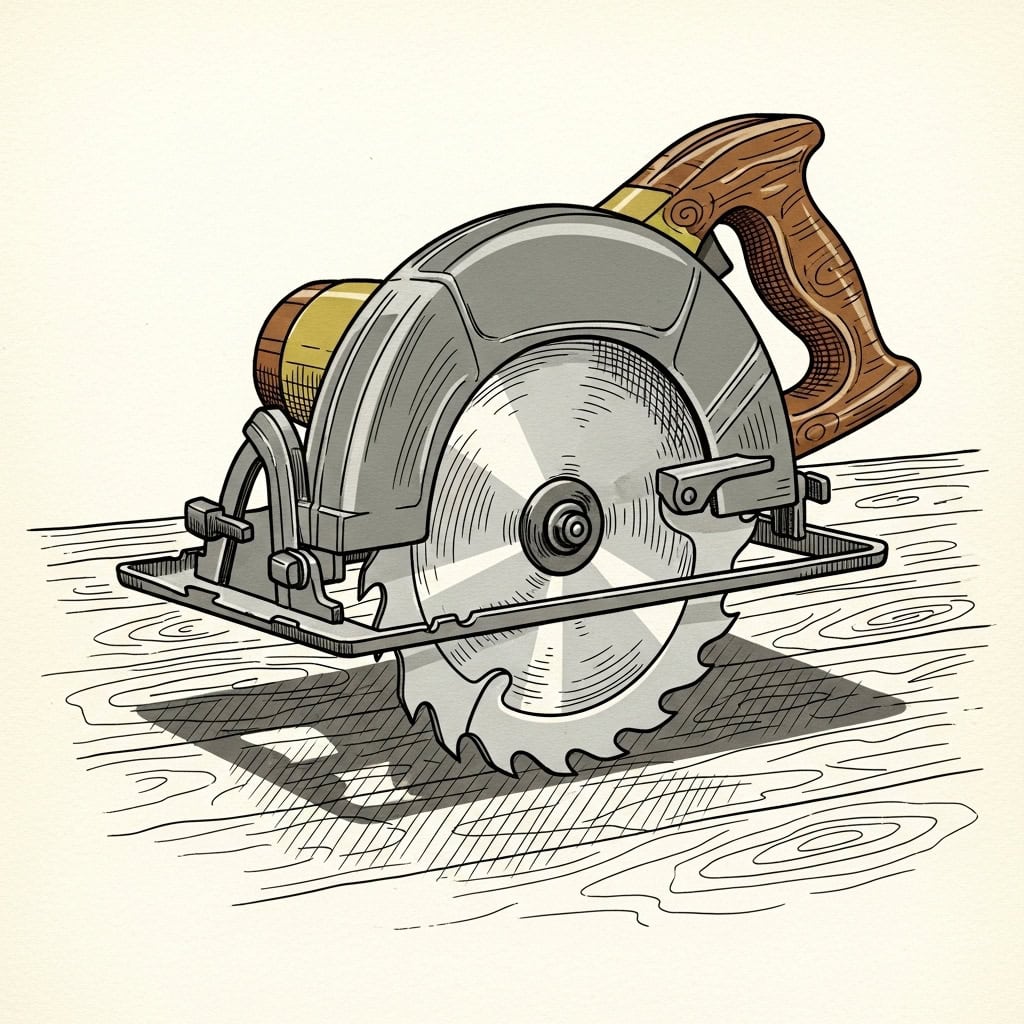
The spring broke at some point, and instead of fixing it, Grandpa just tied the guard up with a piece of wire.
So now the blade was exposed 100% of the time—just hanging out, waiting for something to go wrong.
He’d set it down on the bench while it was still spinning. Blade out. Sparks flying if he hit a nail.
“Just don’t put your hand there.”
Great advice. Really narrows it down.
The power cord was frayed near the handle, wrapped in electrical tape that was older than you.
The base plate was bent. The depth adjustment was stuck. The bevel lock didn’t lock.
But it still cut lumber like butter. And Grandpa still used it like it was fresh out of the box.
7. Extension Cords Daisy-Chained Across the Shop Like Christmas Lights
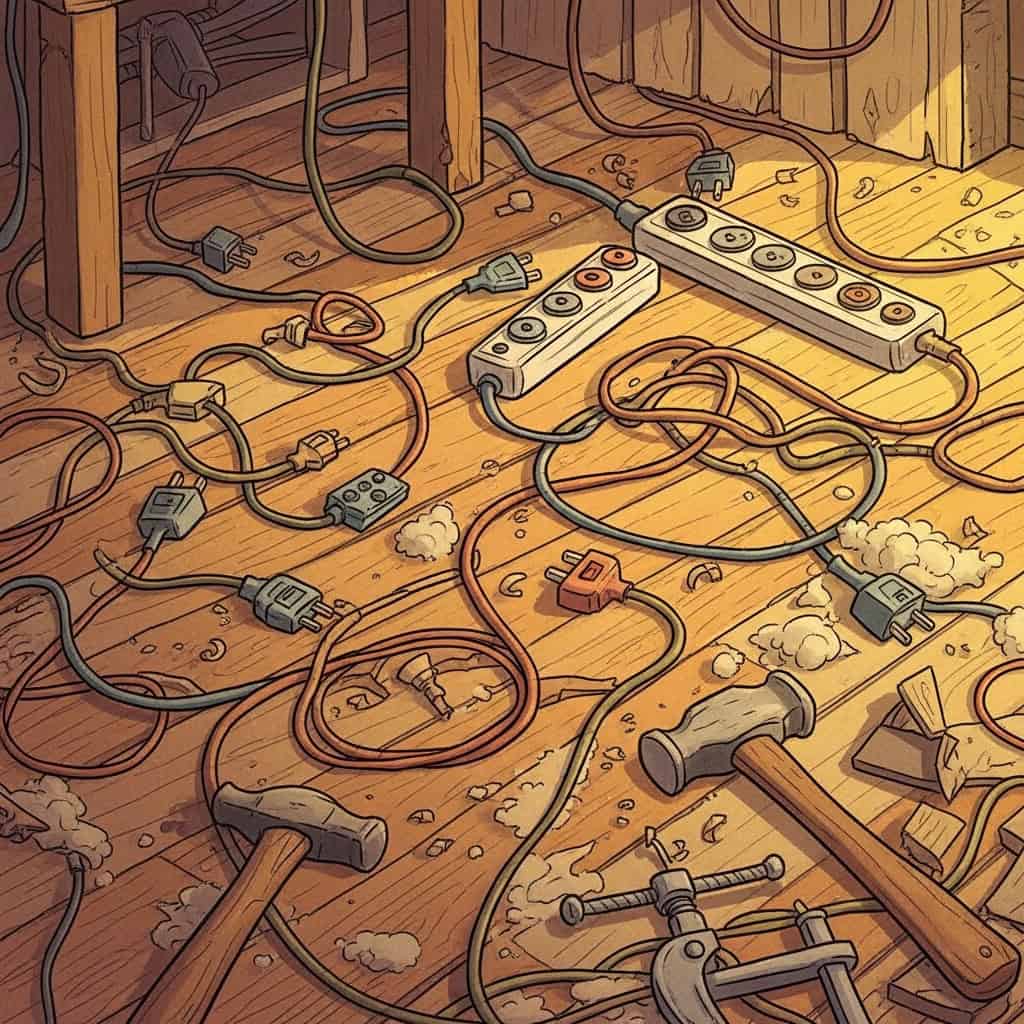
Nothing in Grandpa’s shop was close to an outlet. So he improvised.
One extension cord plugged into another. That one into another. Maybe a power strip somewhere in the middle for good measure.
The cords snaked across the floor, under the table saw, over the workbench, held up with nails in some places.
Some had two prongs. Some had three. None of them matched.
One had exposed copper where the jacket split open. He wrapped it in tape and kept going.
You’d plug in the router and half the shop would dim. The table saw and the shop vac at the same time? Forget it.
“Just don’t run everything at once.”
But he did. Constantly.
Breakers tripped. Sparks flew. The lights flickered.
And somehow, the shop never burned down.
8. A Lathe With No Face Shield, Just Vibes and Squinting
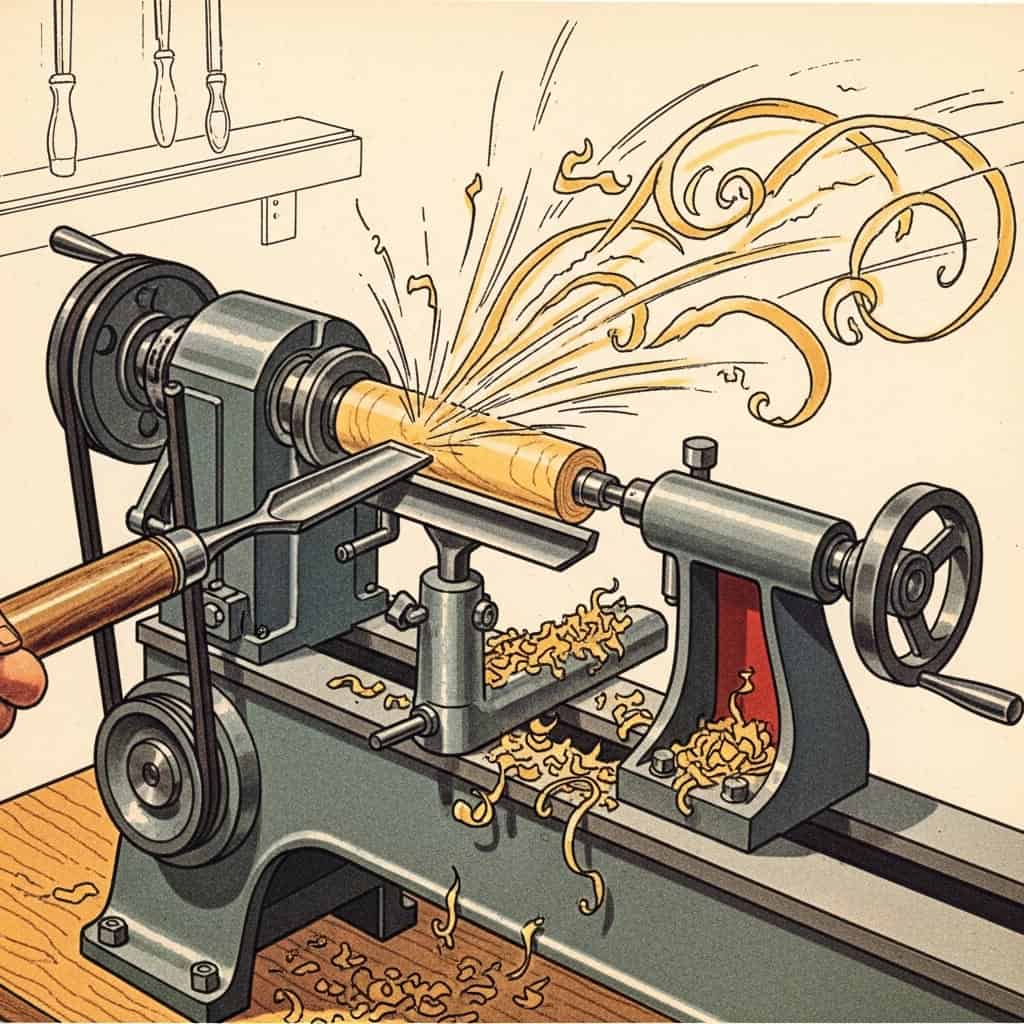
The lathe was a beautiful, terrifying piece of machinery.
Wood spinning at hundreds of RPM, tools digging in, shavings flying everywhere—and Grandpa’s face about twelve inches from all of it.
No face shield. No safety glasses. Just the occasional flinch when a chunk flew off.
“You learn to feel when it’s gonna catch.”
That’s great, Grandpa. Or—and hear me out—you could wear a shield.
The tool rest was loose. The tailstock didn’t lock right. And he’d crank that thing up to speeds that made the whole bench shake.
Bowls, spindles, table legs—he’d turn them all with nothing between him and disaster but decades of muscle memory.
You’d stand behind him, out of the blast zone, praying nothing went wrong.
It usually didn’t. But when it did, it was spectacular.
9. A Drill Press With the Chuck Key Left in the Chuck
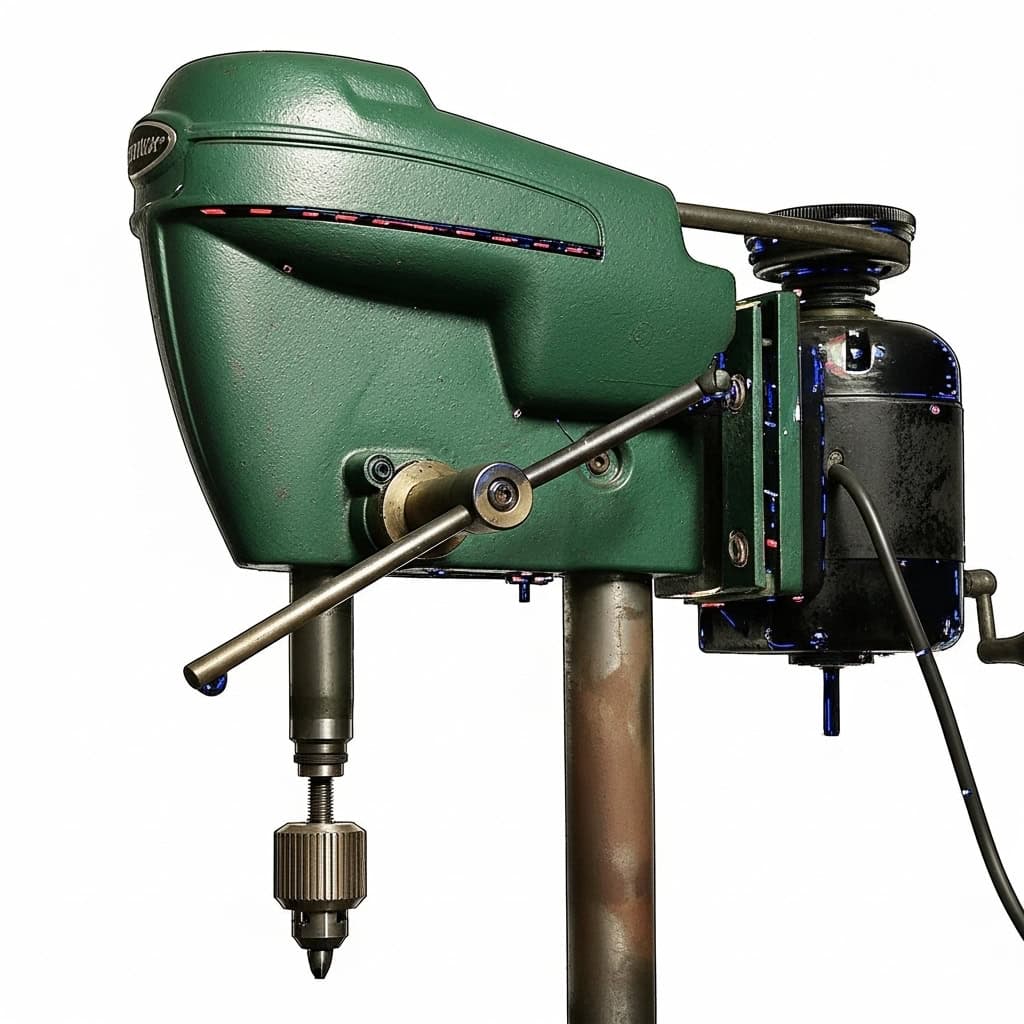
The chuck key lived in one place: jammed into the chuck.
Not on a magnetic holder. Not on a string. Just wedged in there, ready to become a projectile the second someone hit the power switch.
And someone always did.
That key would whip around like a helicopter blade for half a second before flying across the shop and embedding itself in the wall.
Grandpa would just sigh, walk over, pull it out, and put it back.
“You gotta remember to take it out first.”
Or—and this is wild—maybe don’t leave it in there in the first place?
The table was covered in grease and wood shavings. The belts squealed. The speed settings were a mystery.
But it drilled straight holes. And that’s all that mattered.
10. A Router With Homemade Jigs Held Together With Hope

Grandpa’s router jigs were masterpieces of “good enough.”
Plywood scraps. Clamps that didn’t quite fit. Maybe a bolt or two if you were lucky.
No dust collection. No safety guards. Just a screaming router bit and a guide that wobbled if you looked at it wrong.
He’d freehand half his cuts anyway. No template. No fence. Just following a pencil line at 20,000 RPM.
The router itself was older than most of his grandkids. The collet was worn. The base was cracked.
The power switch was taped in the “on” position, so you had to plug it in to start it and yank the cord to stop it.
“Works fine. Why replace it?”
Because it’s a lawsuit with a handle, that’s why.
But the grooves came out perfect. Every time.
11. A Belt Sander Clamped Upside-Down as a “Sharpening Station”
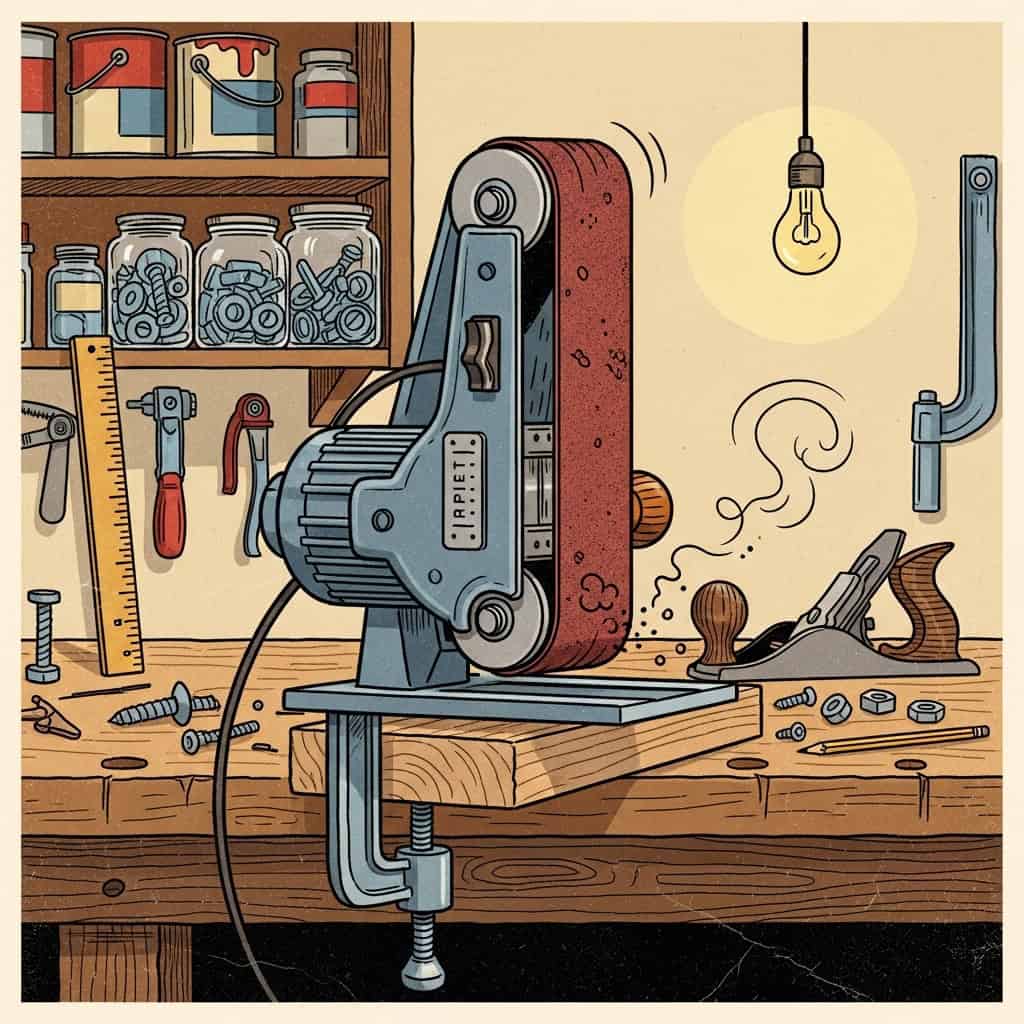
Why buy a sharpening system when you’ve got a belt sander and a C-clamp?
Grandpa would flip that sander over, clamp it to the bench, and fire it up. Instant sharpening station.
No tool rest. No guide. Just him holding a chisel against a belt moving at Mach 3.
The heat would turn the edge blue if you weren’t careful. The belt would grab the tool and fling it across the room if you held it wrong.
He’d sharpen chisels, plane blades, pocket knives, probably a shovel at some point.
Sparks everywhere. Smoke sometimes. And a edge sharp enough to shave with.
“See? Good as new.”
Sure, Grandpa. Good as new and possibly cursed.
12. Dull Blades He Refused to Replace Because “They Still Cut”

A dull blade is more dangerous than a sharp one. Everyone knows this.
Everyone except Grandpa.
His table saw blade had missing teeth. His circular saw blade was duller than a butter knife. The bandsaw blade had a kink in it that made a clicking sound with every rotation.
“Still cuts, doesn’t it?”
Technically, yes. But it also burns the wood, binds up, kicks back, and requires three times the force to push through.
You’d offer to sharpen them. He’d wave you off.
“I’ll get to it.”
He never did.
And yet, he still built cabinets that fit like they were laser-cut.
13. The “Safety Squint” Instead of Safety Glasses
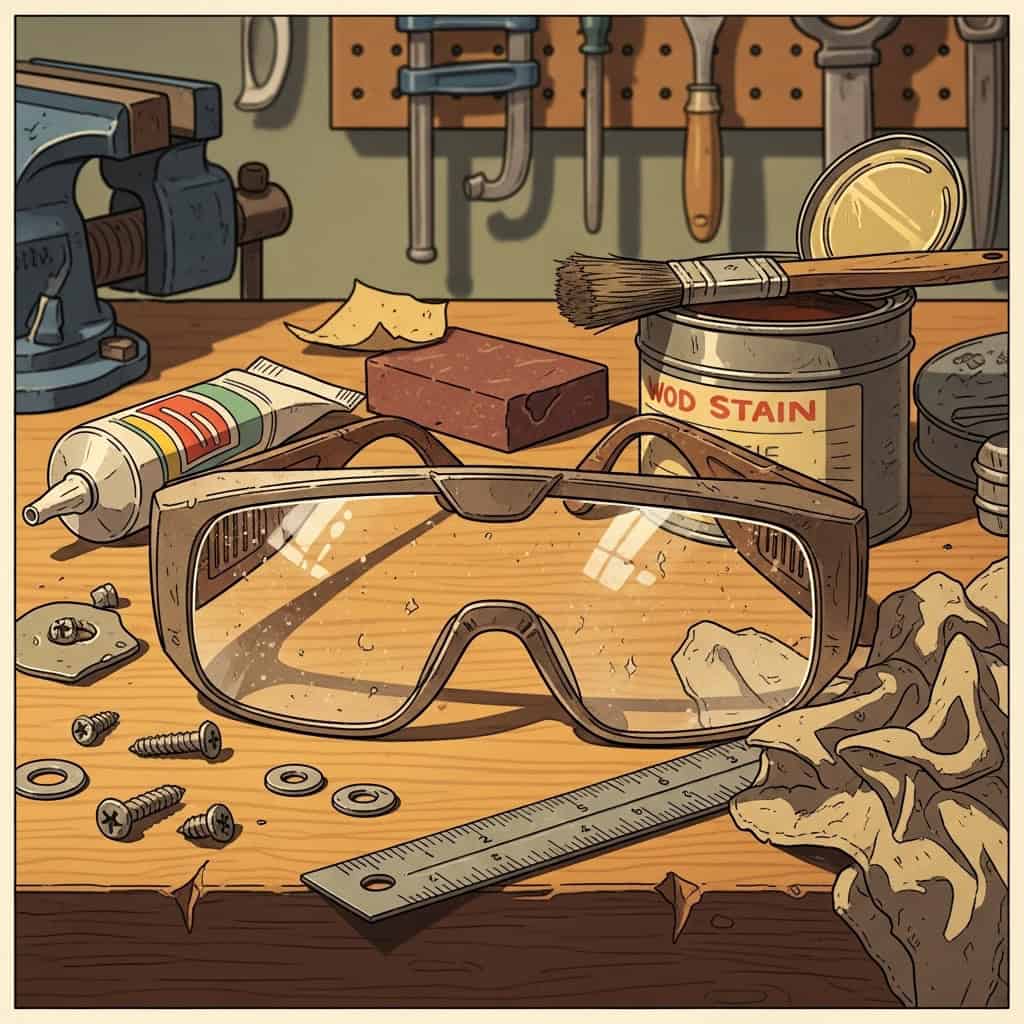
Grandpa’s PPE was unmatched: a slight squint and a turn of the head.
Sawdust in the air? Squint.
Sparks flying? Squint harder.
Something about to hit you in the face? Look away slightly and hope for the best.
He had safety glasses. They were on the bench. Under a pile of plans. Next to the coffee mug full of screws.
He just never wore them.
“Got dust in my eye once. Just rinsed it out.”
Yeah, that’s not the W you think it is, Grandpa.
But arguing was pointless. He’d been squinting since 1965 and wasn’t about to stop now.
14. A Shop Vac With a Filter That Hadn’t Been Changed Since Nixon
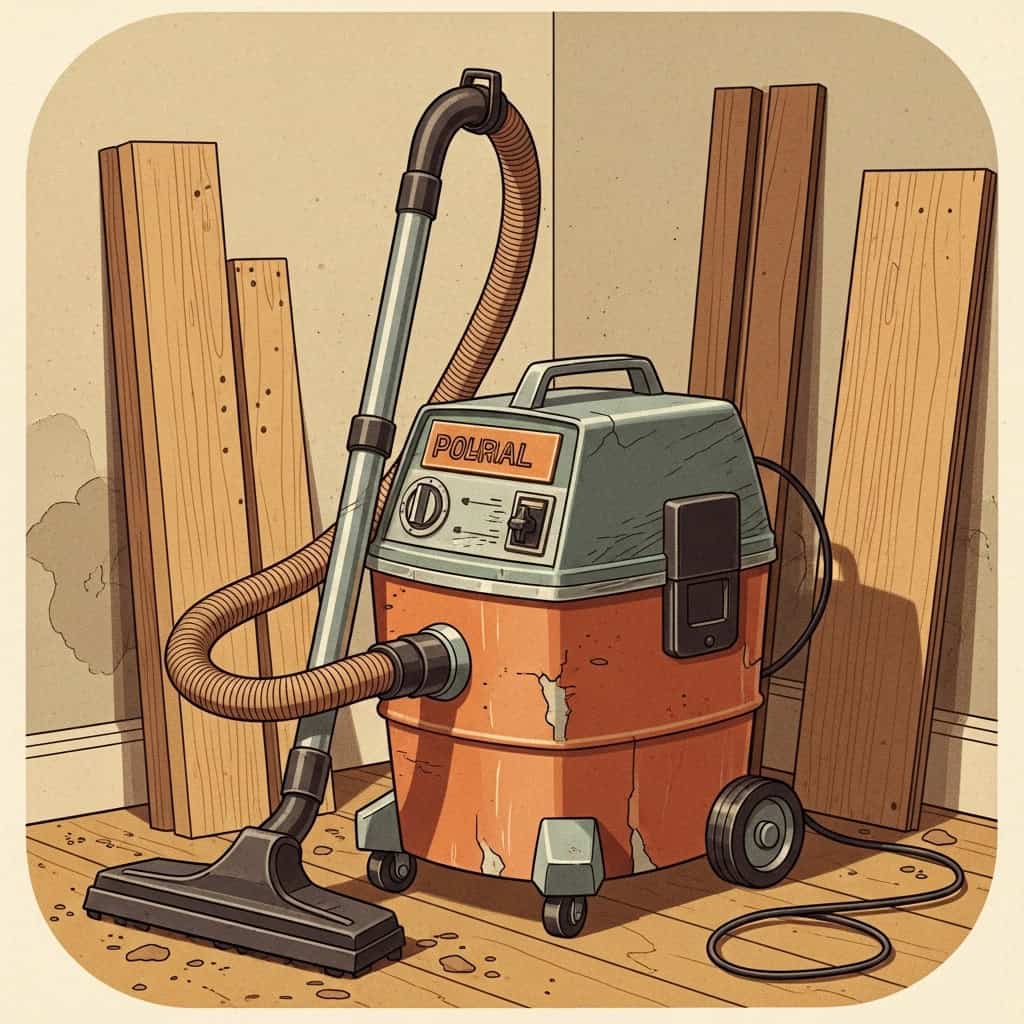
The shop vac roared like a jet engine and had about the same suction as a drinking straw.
The filter was caked with forty years of sawdust, solidified into a gray brick that probably violated some kind of environmental law.
The hose was cracked. The wheels didn’t roll. The power cord was—you guessed it—wrapped in electrical tape.
But Grandpa fired it up after every project, pushing dust around more than picking it up, declaring the shop “clean enough.”
The bag was full. Always. He’d just smack the side and keep going.
“Still works.”
Barely. But somehow, it did.
15. No Dust Collection, Just Open Windows and Denial

Dust collection in Grandpa’s shop was simple: open a window and hope for a breeze.
No cyclone. No filtration system. Not even a box fan.
Just decades of fine sawdust settling into every crack, corner, and lung.
The air was thick enough to taste. You’d walk out looking like a ghost.
Grandpa would blow his nose, wipe his hands on his pants, and get back to work.
“Fresh air’s good for you.”
The EPA would disagree. OSHA would have a stroke. NIOSH would condemn the building.
But that shop produced furniture that’ll outlive us all.
Every tool was a hazard. Every day was a gamble. And somehow, it all worked out fine.
Just like Grandpa.
